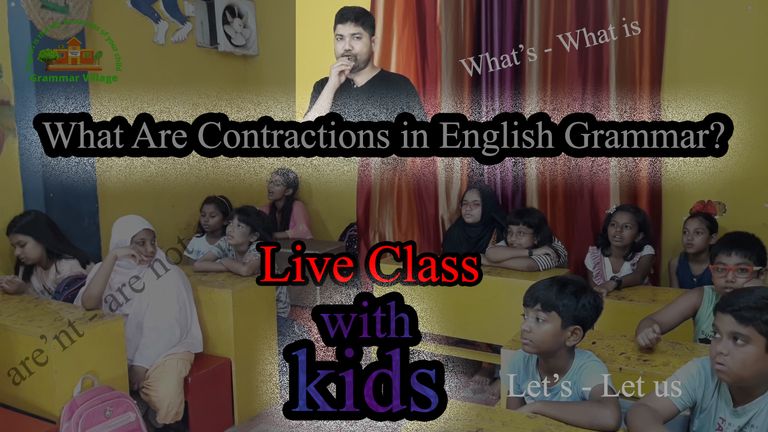A contraction is a combination of two or more words that creates a shorter new word by omitting some letters and sounds. Contractions typically appear in colloquial speech and informal writing. You can form contractions by combining subject pronouns and verbs, and interrogative adverbs and verbs, verbs and the word “not,” as well as by omitting letters for informal, spoken contractions.
A contraction is a word or phrase that has been shortened by dropping one or more letters. In writing, an apostrophe is used to indicate the place of the missing letters. Contractions are commonly used in speech (or written dialogue), informal forms of writing, and where space is at a premium, such as in advertising.
In very formal writing, such as academic papers, grant proposals, or other works that need to appear professional, you may not want to use contractions at all.
Why Do We Use Contractions?
We rely on contractions all the time in normal conversation. When people speak to each other, there is typically an expectation that they will use contractions (can't, won't, shouldn't) whenever they can, as doing so saves time.
Some people are under the impression that contractions should never appear in writing, but this belief is mistaken. The use of contractions is directly related to tone.
In informal writing (from text messages and blogs to memos and personal essays), we often rely on contractions to maintain a colloquial tone. In more formal writing assignments (such as academic reports or term papers), avoiding contractions is a way of establishing a more serious tone.
Before deciding whether to use contractions in a writing assignment, consider your audience and your purpose for writing.
The Contractive Apostrophe
In telescoped words and phrases (e.g., doesn't, there's, sou'wester), an apostrophe marks the spot where one or more letters have been omitted. It is not necessarily where the words have been joined together. This apostrophe is also known as the contractive apostrophe.
Some people, including the Irish playwright George Bernard Shaw, have been in favor of eliminating apostrophes entirely. Shaw called them "uncouth bacilli," though it's unlikely that Shaw's analogy to bacteria will help the apostrophe go away anytime soon.
Contracted Nouns and Pronouns
In casual conversation, contractions involving nouns are fairly common ("My dad'll be home soon"). In writing, however, they're much rarer than contractions with pronouns such as I'll, he'd, and she's. You can contract proper nouns to mean is or has, such as in the sentence "Shelly's coming with us," or "Jeff's bought a new computer." Watch out for the homonyms who's and whose; the contraction is "who is" or "who has," and the whole word is possessive, as in "Whose car is that?" And of course, if you're visiting the South, you'll likely hear the colloquial "y'all" for "you all."
Negative Contractions and Verb Contractions
Contractions are often made with auxiliary, or helping, verbs, such as to be, do, have, and can. We can say "it isn't raining" or "it's not raining." But we cannot say "it'sn't raining." In negative clauses, we have a choice between using negative contractions like not (n't) and contracting the pronoun and verb (it's). But we can't do both.

Contracting 'Not'
The contracted form of not (n't) can be attached to finite forms of the helping verbs be, do, and have. However, amn't (mainly Scottish and Irish) is extremely rare, unlike the disparaged ain't.
The n't form can also be attached to most of the modal auxiliaries such as can't, couldn't, mustn't, shouldn't, won't, and wouldn't. Yet, you won't hear many Americans saying mayn't or shan't; even those contractions are too formal.
Contractions in Tag Questions
A tag question is a short question added to the end of a declarative sentence, usually to make sure that something has been done or understood. For example, "It's a tag question, isn't it?"
Because of their colloquial nature, negative tags are commonly contracted: didn't we? haven't you? aren't they? This is much less formal than did not we? or did we not?
Ambiguous Contractions
Most contractions ending in 'd and 's are ambiguous. The 'd can represent either had or would; 's can represent either has or is. All the same, the meaning of these contractions is usually clear from their context. For instance, "Sam's finished his term paper" implies completion in the past (Sam has finished), while "Sam's tired" is in the present tense, meaning Sam is.